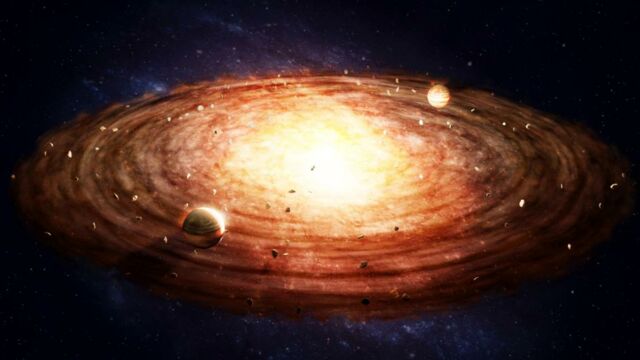In 1990, a small meteorite crashed in the Sahara desert in Algeria. 4.6 billion years old, it was nicknamed Acfer 049. A recent analysis of the fragment has provided us with new information about the formation of our solar system since 'ice fossils' were found trapped inside. This is the first direct evidence that frozen water is one of the building blocks of the first asteroids. The results were published in the Science Advances journal on November 20th.
Discover our latest podcast
A structure that is difficult to study
Scientists already knew that asteroids could include ice in their structure because they observed water-related mineral alteration within them. But they wanted to know how much of it was present, how it was distributed in the celestial body and when it melted.
Until then, the matrix (or structure) of the meteorite itself made it difficult to study. The researchers did not have the necessary technology to investigate very fine grains. For this new research, they used high spatial definition microscopes. And they finally observed tiny pockets inside Acer 049, called 'microscopic holes,' that once contained ice before it melted.
Ice, a foundational material
To understand why this discovery is fundamental, let us recall how a solar system is created. It all begins with the formation of a star, the Sun, which is formed from a cloud of dust and gas. This process flattens the 'cloud' around the newly formed star, in what is called the 'planetary disc.' The latter includes hydrogen, ice, iron and silicates... The remains of unused materials become the ingredients of different celestial bodies. Over time, these dust particles and elements stick together leading to the formation of asteroids in particular.
In these binding particles, there is ice floating beyond the so-called 'snow line.' This is the point on the planetary disc beyond which water in a solid form can exist. If it came any closer, it would be melted by the heat of the developing star. Ice is therefore 'a starting material from which all the planets, including the Earth, come,' explained Epifanio Vaccaro, author of the study and curator of petrology at the Natural History Museum in London, in a statement. 'It is therefore believed that the matrix of these meteorites is the starting material from which all planets were formed.'
Informative information
But since planets are the result of the same creative process, why aren't we directly looking for these answers on Earth? Because when the ingredients melt, they change with heat. The molten metals form the nucleus of the star, while the silicates form the mantle and the crust. The rocks found on our Blue planet are therefore very different from those found in asteroids. Asteroid rock debris has maintained a blank record of the ingredients that made it up.
'This means that if we want to understand what the dust looked like when the solar system was formed, we have to go back and recover some of the materials that were not going through this differentiation process,' said Epifanio Vaccaro. 'In some meteorites, we have this preserved starting material.'
And although asteroids are teaching us a little more about the creation of our solar system with every passing day, they are also able to teach us about the beginning of biological life on Earth. Two days before this recent publication, researchers announced that they had also identified an element essential to life in meteorites: ribose, a bio-essential sugar.















